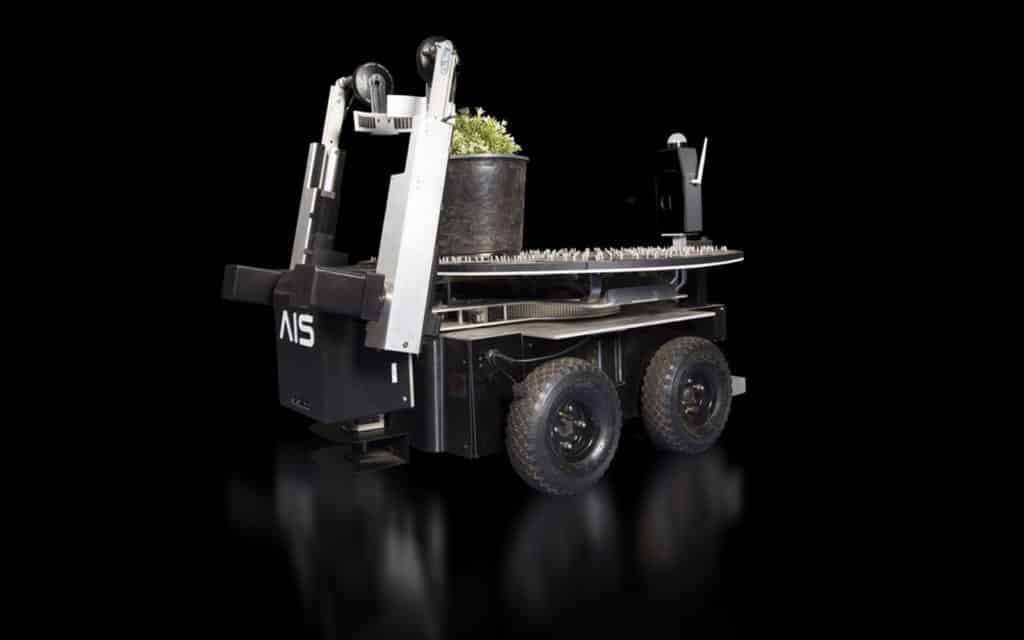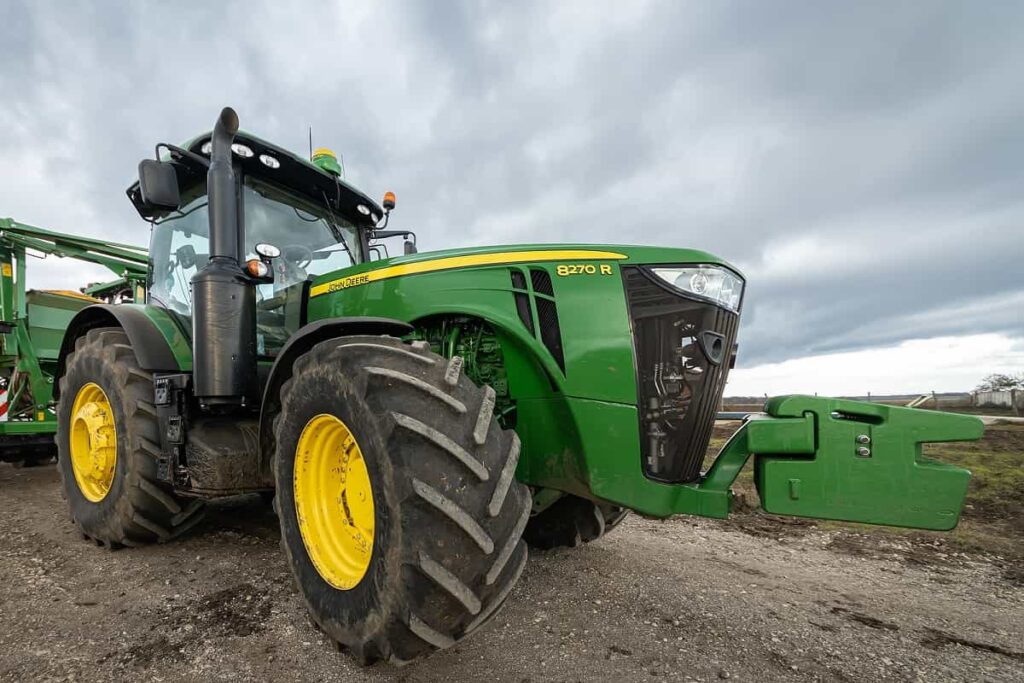Autonomous Robots for Horticulture Are Here
Table of contents

Contrary to what some people might claim about how oppressive it is to live in the United States of America, it’s actually one of the better places to live in the world when it comes to quality of life. There is an abundance of food and a thriving agriculture industry. Americans are also fortunate enough to grow plants purely for ornaments. You might not even notice anymore, but decorative vegetation is everywhere. It’s called horticulture, and it’s a much bigger business than one might think.
Those of us who live in first-world countries might be familiar with what a shrub is. Wikipedia defines them as “small to medium-sized woody plants” and they’re largely used for decorative purposes. As with any other agricultural crop, shrubs require space to grow in so they can reach the desired size and be sold. These locations are usually greenhouses and nurseries that command a lot of space. In North America and Europe alone, there are more than 500,000 acres dedicated to growing shrubs – and that’s only counting grow operations of 50 acres or above. Within this segment, around 11 billion shrubs are being grown at any given moment by 97,000 workers who command around $2.4 billion in annual wages. It’s also an industry that’s shrinking right now because of the number one problem on every nursery operator’s mind. Labor, or the lack thereof. One company out there has decided to tackle the problem with robots.
Advanced Intelligent Systems (AIS)


The robot you see in the above picture is called BIGTOP, and it’s a sophisticated piece of machinery with no equal. You may recall a while back that we touched on a company called Harvest Automation that was working on robots that would move potted plants around, one at a time. When we looked at what AIS was working on, it really takes horticultural robotics to an entirely different level.
Shrub Cultivation is Labor Intensive Work
The life of a shrub in a nursery is rather boring. After first being planted, it’s given fertilizer and water until it reaches the right size to sell. However, there are a few extra steps that make the whole process a lot more labor-intensive. During its life, a nursery shrub needs to be moved around an average of four times to provide it with the optimal space needed to maximize growth. Think about what it would be like if you had to move 500 rose bushes from one plot to another and space them apart at even distances while trying not to get pricked with thorns. Now imagine those roses are in heavy 5-gallon buckets. There is nothing remotely redeeming about moving around plants, so the Canadians turned to the one place in the world where people have a strong enough work ethic to do menial labor and be grateful for the opportunity. Mexico.
That’s right, nurseries in Canada employ our cousins south of the border to help with menial tasks like plant moving. The need to look outside the country for competent labor poses a whole different set of problems. Some nurseries employ several full-time staff just to handle the work visas and immigration paperwork. There’s a need to have bilingual managers, housing for the workers, and some of the jobs are seasonal which isn’t overly appealing to any worker. In fact, Mr. Doust said that labor shortages are such a big problem now that the horticulture industry is actually starting to shrink. It was the nurseries that approached AIS asking if they could design a robot to help address the labor shortage. AIS responded with BIGTOP, a robot that doesn’t just space plant pots but does a whole lot more.

Robots For Horticulture Are Here
As Mr. Doust told us, the idea to use robots for moving plants was simply a foot in the door. That’s not to say that their plant moving robot isn’t cool. BIGTOP is able to pick up 5 five-gallon pots and place them on its back. The smaller the pots, the more it can place. (90% of the industry uses pots five-gallon or smaller.) In order to navigate autonomously, the robot is equipped with sophisticated navigation and object recognition capabilities. As the robot picks up a plant, it can then start to add additional value. For example, it might start keeping track of inventory – something that nursery operators said is currently missing. The same computer vision capabilities can be used to examine a plant’s health. Since the robot talks to the cloud, it can quickly relay a picture of a sick plant to a nursery worker who can respond back with an instruction for the robot. If a plant is a bit bushy and due for a trim, the robot will soon be able to sort that out too.
The AIS robot platform has been built in a modular fashion so that additional functionality can be added based on requests from their customers. For example, one nursery asked if they might be able to look at a pruning attachment. Presently, pruning takes place using a conveyor belt (more moving of pots for the poor humans) or by a machine that’s placed over each individual plant by a human. Similar to pot placing, this is a mind-numbing activity which nobody really wants to do. We got to take a sneak peek at the pruning attachment AIS is working on and they expect that module to be commercialized next year. In addition to pot placing and pruning, they’re also developing several more robots for horticulture.
As you may have guessed, plants need to be moved around a lot for various reasons. When it comes to moving large numbers of plants across long distances, AIS has developed an innovative solution. The first component is a collapsible cart with multiple trays that can be expanded by an autonomous robot. The same robot also has an arm that can lift the plant pots off the ground and place them on the shelf. Once the cart is loaded, another autonomous robot pulls the cart to the destination where it’s then unloaded by a robot as well. When all is said and done, AIS will have patented the automation of the entire chain of cultivating and growing plants and shrubs.
The Benefits of Horticulture Robots
When it comes to the costs nurseries will incur to adopt these robots, pricing will be based on usage rather than requiring an upfront commitment of capital to purchase the robots. Think of it as “Robots-as-a-Service.” The robots can perform better than humans in sheer numbers of pots moved at a much lower cost than manual labor. There are also many collateral benefits that might not be so obvious. For example, workers sometimes choose not to pick up a plant by the pot but grab the shrub instead which puts an unnecessary strain on the plant. The robot always grabs the pot.

In the case of roses or cacti, the worker is forced to grab the pot but is more likely to be injured as a result of constantly bending over all day. Injuries can be costly to a nursery operator. By now you’ve probably figured out that AIS’s machine learning algorithms are going to start munching all this big data soon to learn even more about optimal growing conditions for nurseries.
Beyond Horticulture
While AIS has done some amazing things in the area of horticulture, we were surprised to hear just how big their vision is and how strategic they’re going about it. A small team including a full-time patent attorney is dedicated to identifying their intellectual property and moving to protect it. They’ve already filed 10’s of patents and are continuing to file more every month. The level of dedication they’re putting into securing intellectual property for their robots hasn’t gone unnoticed, and some potential suitors have even come sniffing around. That’s because AIS is building an industry-agnostic robotics platform that can scale. Their pipeline of potential applications extends well into the future, and well beyond horticulture, to include mining, warehousing, surveillance, and even film. Still, the immediate focus is to start selling robots to nurseries. Their robots are being manufactured in Canada and the first one was just delivered last week with 119 more to follow this year. Around 20 of those robots will be delivered to nurseries in the vicinity.
Conclusion
There’s a certain trepidation that robotics firms have when describing how their solutions are able to perform optimally against a human counterpart. That’s because some people are apprehensive about robots taking all the jobs. Let’s set aside the fact that capitalism doesn’t care about your feelings and focus on what jobs are being taken over by robots. In this case, we’re talking about some of the most mindless and mundane tasks you can think of. While trimming some freshly dried sativa colas might be fulfilling, pruning a shrub isn’t. Neither is moving around shrubs and placing them in designated spots. Not even a hit of British Colombia’s finest skunk could make that sort of job fulfilling. Thanks to AIS, robots for horticulture are going to sort all that out very soon.
Sign up to our newsletter to get more of our great research delivered straight to your inbox!
Nanalyze Weekly includes useful insights written by our team of underpaid MBAs, research on new disruptive technology stocks flying under the radar, and summaries of our recent research. Always 100% free.














